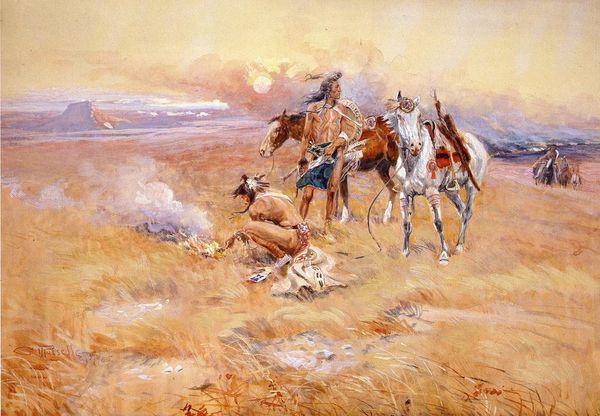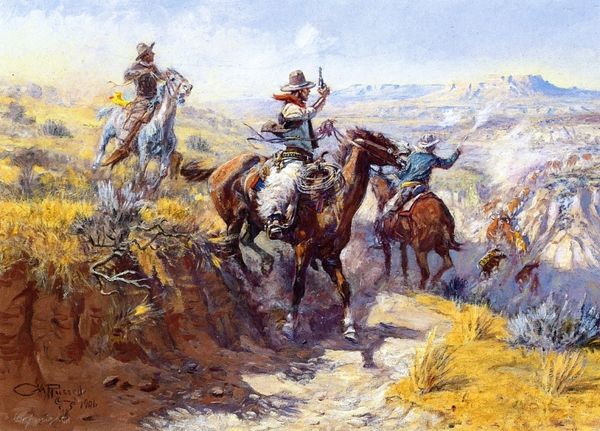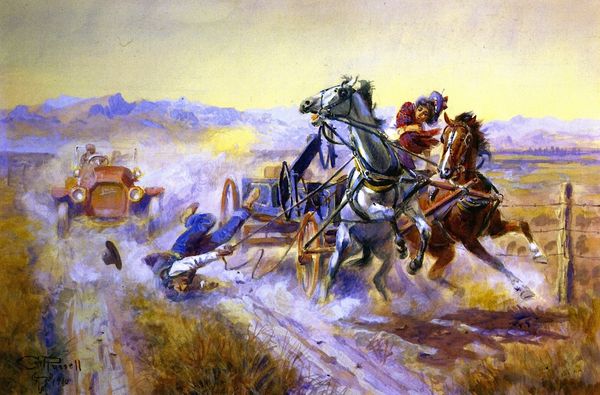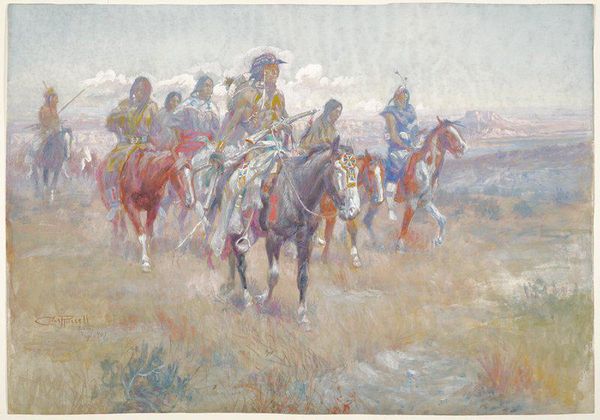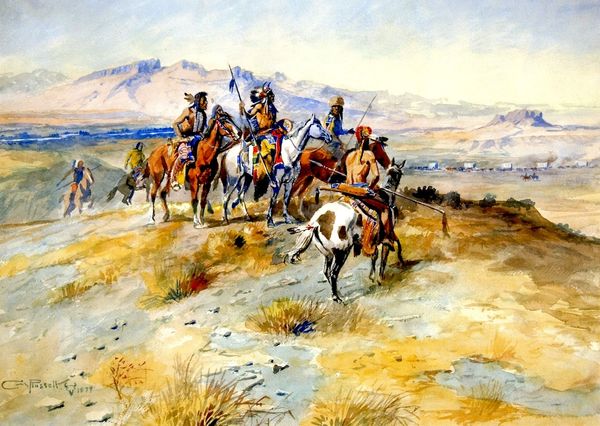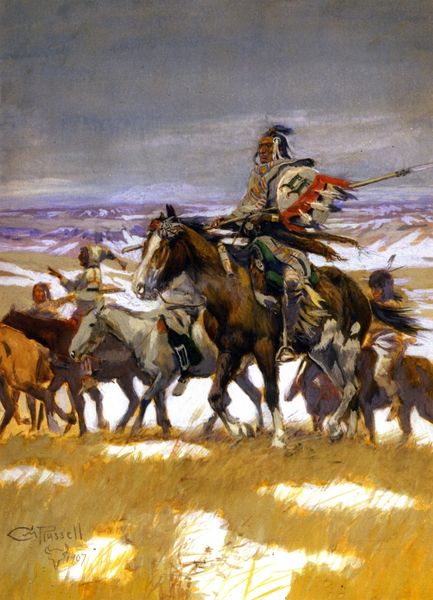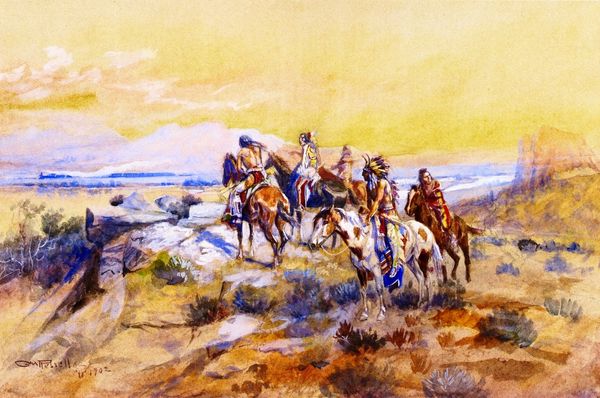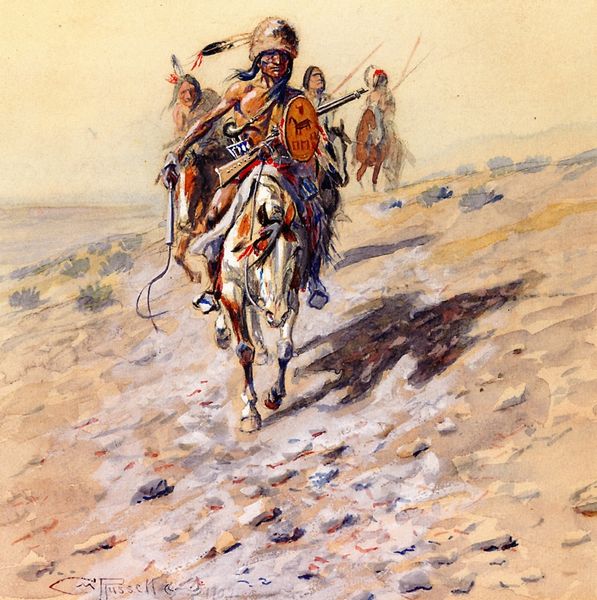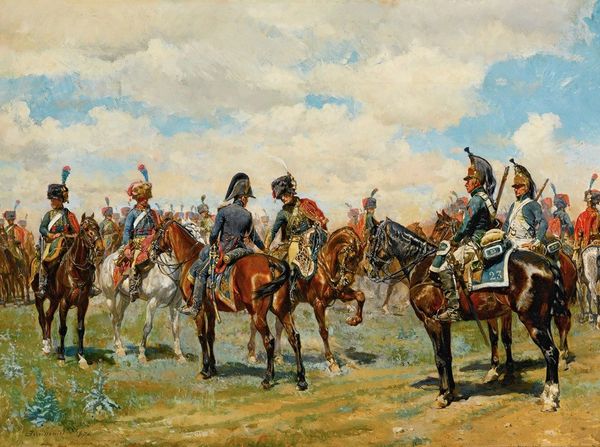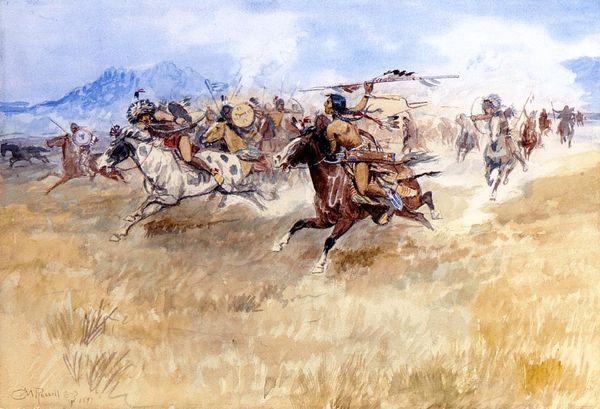
painting
#
narrative-art
#
painting
#
landscape
#
figuration
#
oil painting
Copyright: Public domain
Curator: This work before us, "Navajo Wild Horse Hunters," was created by Charles M. Russell around 1911. It is an oil on canvas. Editor: It immediately strikes me as incredibly dynamic. The energy is palpable – a chaotic dance of humans and animals. It romanticizes something fierce and wild, like freedom itself. Curator: Absolutely. Russell was deeply invested in capturing the spirit of the West, often focusing on the lives and activities of cowboys and Indigenous peoples. Paintings such as this reinforced the existing mythical vision of the old West as the railroads and settlements irrevocably transformed that lifestyle and landscape. Editor: It’s difficult not to view it through the lens of appropriation and romanticization. The depiction is visually exciting, even alluring, but at what cost? This kind of portrayal often served to overshadow the real sociopolitical realities faced by Indigenous communities, including displacement and cultural erasure. We must view this art critically, recognizing its participation in those larger narratives. Curator: Indeed. Russell often engaged in complex forms of cultural representation. The artist worked hard at including what he had witnessed and heard in Native communities in order to avoid being mistaken for Eastern illustrators who portrayed a vision of Indians which they fabricated from literature. That included adopting cultural items. Editor: Let’s also consider how this painting speaks to issues of animal rights. Are these horses being humanely captured, or is there a suggestion of violence? That the riders do not seem overly concerned to rein in and show control indicates some tension. And of course, there are those who will rightly interpret their action as cruel. These aren't neutral choices in representation; they tell us something important about human-animal relationships and cultural priorities at the time. Curator: What resonates with me, looking at the painting, is Russell’s ability to portray the moment and what came to be the final stages of that early American frontier ethos. The mythology had its day and persists still to this day as an industry in mass visual culture and tourism. The dynamism is captivating. Editor: The narrative here is frozen in time, a powerful example of the way art shapes historical memory and constructs identities. But it reminds us we have an obligation to analyze it and see what the stakes really are. Curator: Thank you. That reflection provides an important critical conclusion. Editor: A crucial critical lens for us all, yes. Thank you.
Comments
No comments
Be the first to comment and join the conversation on the ultimate creative platform.
